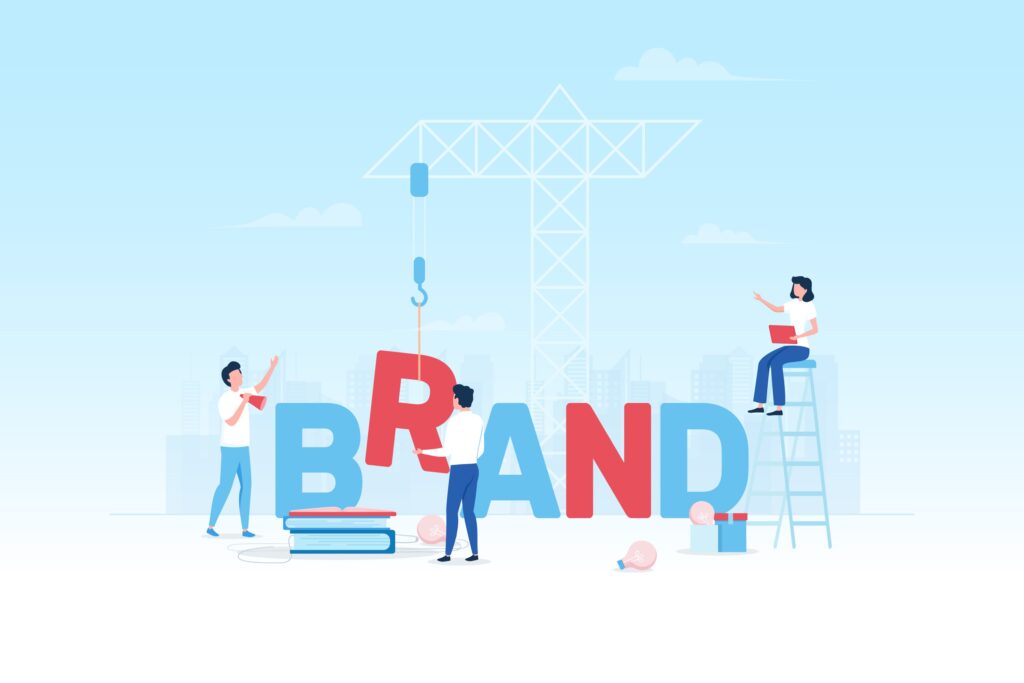Why do you need to reconsider a brand strategy in 2022?
All is well. You started your own business. For a long time, you had an idea in your head. Then it was time to get it out of your head. So, you decided to put together a financial construction, business plan, space, people, equipment, marketing, advertising, and you embark on an adventure of a lifetime. And – it started. Customers came, the business was doing good, so you grew a little more, hired more people, bought better equipment, moved to a larger space. You are happy and thriving. It has been like this for several years, and you have become more or less recognizable. And then you stopped. Business growth is stagnant, some people have left you, your customers have started expecting news and changes from you, and you are stuck.
You know you need change. You don’t know which direction you’d like to go, and it’s all hard for you to define; it’s unclear. Should you create a new visual identity, do more advertising, introduce a new product, start using new/other communication channels with customers, or move to a new location, who knows?
The person who does branding knows.
What is branding, and how can it help my business?
2020 was a gamechanger for brands and consumers. From Attention Economy to the Sharing Economy, we have now entered the Values Economy. The relationship between brands and customers has never been more challenging. Value has become the new currency, and consumers want purpose-driven brands. And if that purpose and value align with the values of our customers, we have a bingo.
Because if you don’t know who you are, what you are, why you exist, what you believe in, and what you want to achieve in the marketplace, your business will suffer.
When you lack strategy in brand communication, you will face numerous challenges: from communicating to customers to lacking competitiveness in the market.
There are many definitions of what a brand strategy is.
Generally speaking, a brand strategy is a systematic plan to build a brand to support and achieve your business strategy.
It’s a conceptual and operational plan for how your brand will express itself in public, a plan that includes the message the brand wants to convey, its personality, values, and visual appearance.
Brand strategy has two tasks – to solve your business challenge while solving your customer’s challenge. Unfortunately, there are many misconceptions about branding, and today, a vast majority of people think branding is just about design.
Brand strategy is not only the logo or visual identity; strategy is a signpost to trace future success. The strategy is a document that contains strategic differentiation, all the marketing tactics, and communication solutions that will help us solve the client’s business problem and the problem for his customer.
A brand is a perception a person has about your business. It’s a sum of all expressions that a person, company, or another entity wants to be recognized. When you are “branding,” you’re expressing everything your brand represents, including the relationship with the customers.
Brands communicate emotions and values, which are the basis of any relationship. Whether authority, respect, trust, empathy, honesty, or warmth, your brand needs to give its customers a specific value. They will then reciprocate with a purchase, recommendation, or loyalty.
Brands tell a story about your business, and your customers love them because of that.
So, why do certain brands become great brands, and some just fail?
Every day, hundreds of brands are being started, being born into this world. Top that with the millions of the existing ones, and all you get is a big, beautiful mess. So now, in that big pot of choices (Well, hello, the paradox of choice!), why would a customer or a client choose you over your competitor? That is where the strategy steps in – to differentiate.
If you try to fit in your niche, you will do just that – fit in. And if you fit in, how will someone else find you? So, fitting in is not an option anymore. It’s disruption, differentiation, and being authentic, not opportunistic.
If everybody looked the same, we’d get tired of looking at each other (Groove Armada, 1999.)
A person that can help you navigate the branding process is a brand strategist. A brand strategist sees all the details through the customer’s eyes and predicts the trends others don’t see, so a good strategy can help you be distinctive.
On a more practical level, brand strategy can help you:
- Define and understand who you are as a brand, define your purpose and values
- Consistently and effectively communicate your brand’s messages through all channels and content you send out to the world.
- Define which customers you want and ultimately attract them to create a stable, long-lasting brand and business
- Differentiate and position your brand to be recognizable on the market
Brand strategy can also increase the (material) value of your brand. Today, Apple’s brand is worth 65% of their evaluation of their entire company, and the Coca-Cola brand has similar value. So even though the evidence of good branding takes time to show itself, you can see its effect even on the stock market, and companies that last typically have strong brands.
The example I mentioned in the introduction is just illustrative, and branding can help no matter how big or small your company is. It can help if you are a start-up, solopreneur, a small to medium-sized business, or work in a big corporation.
Of course, you don’t need branding to succeed in business. Many companies decided to skip this part and went straight to creating just the visual aspect of branding – visual identity or the logotype.
Because branding takes time to show results, many of them decided to go straight onto the marketing, which offers results much faster. But, in the long run, to skip such an essential thing as branding, you might end up losing the foundations of your business.
If I asked you to name the brands you remember, you would probably answer instantly, right? Why? Branding. You remember them because of their consistent and different branding.
Let me name some great examples: The Ordinary, a brand which differentiates by a mission to help solve skin problems by offering a great product without the “shiny” story, relying solely on the quality of that product as a selling point; Glossier, a brand that invests so little by the classical meaning of branding but instead builds a community of ordinary people as brand spokespersons; Tesla, a disruptor with a mission to expedite the transition to fully sustainable energy; Jimmy Fantastic as an expensive chocolate brand manufacturer that tells a story about quality; or Snickers which delights and surprises us with every ad; these brands know that they need to stand out.
According to Statista, Apple, Amazon, Google, Microsoft, Samsung, Wallmart, Facebook, ICBC, Verizon, and WeChat are the most valuable brands in 2021.
And it’s no wonder because, ultimately, brands shape the perception of their customers, employees, and investors. As a result, they influence purchasing behaviour, making (their) products and service more in demand to the point of being irreplaceable. That way, they are creating economic growth.
Even if you don’t know anything about branding, you have probably heard about Gary Vaynerchuk. He is an icon and impossible to miss. Why? Because he branded himself.
To conclude, let me quote the man himself:
The reality is that the greatest companies in the world don’t sell.
They brand… It’s all about branding.
So, what do you choose?


